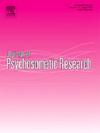使用抑郁症严重程度的临床测量来评估治疗对总护理成本的影响的可行性
IF 3.3
2区 医学
Q2 PSYCHIATRY
引用次数: 0
摘要
目的患者健康问卷9项(PHQ9)已成为临床常用的抑郁症严重程度的测量方法。因此,本研究旨在确定从付款人的角度来看,PHQ9评分的降低(即症状严重程度的改善)是否对应于护理成本的节省。研究小组获取了2016年10月至2018年9月两年间美国一家大型学术雇主雇员的健康保险索赔数据和相同个体的PHQ9分数,将样本限制在12个月内两个独立日历月内至少有两个PHQ9分数,初始分数为10或以上,并且在12个月内保持连续保险登记的人。研究小组将样本分为3个相互排斥的组:12个月内无改善(NI; PHQ9评分保持不变或恶化),部分改善(PI;改善1% - 49%)或临床显著改善(CSI;改善≥50%)。然后比较各组间按每位成员每年计算的经回归调整的平均总护理费用。结果与NI相比,CSI的总护理费用降低了36% (p = 0.032)。然而,NI和PI之间没有统计学上的显著关联。结论:虽然因果关系很难解释,但这些发现表明,PHQ9评分在临床上有意义的改善与较低的总护理成本有关,并且开发一种将财务激励与临床结果相结合的绩效支付方案是潜在可行的。然而,目前存在一些阻碍在现实环境中实施的障碍。本文章由计算机程序翻译,如有差异,请以英文原文为准。
Feasibility of using a clinical measure of depression severity to assess treatment impact on total cost of care
Objective
Patient Health Questionnaire 9-item (PHQ9) has become a commonly used clinical measure of depression severity. This study therefore seeks to determine whether reductions in PHQ9 scores (i.e., symptom severity improvement) correspond to cost of care savings from the payer's perspective.
Methods
The study team obtained health insurance claims data and the PHQ9 scores of same individuals among employees of a large academic employer in the United States covering a two-year period from October 2016 to September 2018, limiting the sample to those who had at least two PHQ9 scores in two separate calendar months during a 12-month period, had initial score of 10 or above, and maintained continuous insurance enrollment for the 12-month period. The study team divided the sample into 3 mutually exclusive groups: no improvement within the 12-month period (NI; PHQ9 score remained unchanged or worsened), partial improvement (PI; 1 %–49 % improvement), or clinically significant improvement (CSI; ≥50 % improvement). Regression-adjusted mean total cost of care calculated on a per-member-per-year basis were then compared across the groups.
Results
The results indicated that relative to NI, CSI had incurred 36 % lower total cost of care (p = 0.032). However, no statistically significant association was found between NI and PI.
Conclusion
Although causal interpretations are difficult, these findings suggested clinically meaningful improvements in PHQ9 score are associated with lower total cost of care and that it is potentially feasible to develop a pay-for-performance scheme that align financial incentives with clinical outcomes. However, several barriers currently exist that prevent implementation in real-world settings.
求助全文
通过发布文献求助,成功后即可免费获取论文全文。
去求助
来源期刊
CiteScore
7.40
自引率
6.40%
发文量
314
审稿时长
6.2 weeks
期刊介绍:
The Journal of Psychosomatic Research is a multidisciplinary research journal covering all aspects of the relationships between psychology and medicine. The scope is broad and ranges from basic human biological and psychological research to evaluations of treatment and services. Papers will normally be concerned with illness or patients rather than studies of healthy populations. Studies concerning special populations, such as the elderly and children and adolescents, are welcome. In addition to peer-reviewed original papers, the journal publishes editorials, reviews, and other papers related to the journal''s aims.

 求助内容:
求助内容: 应助结果提醒方式:
应助结果提醒方式:


